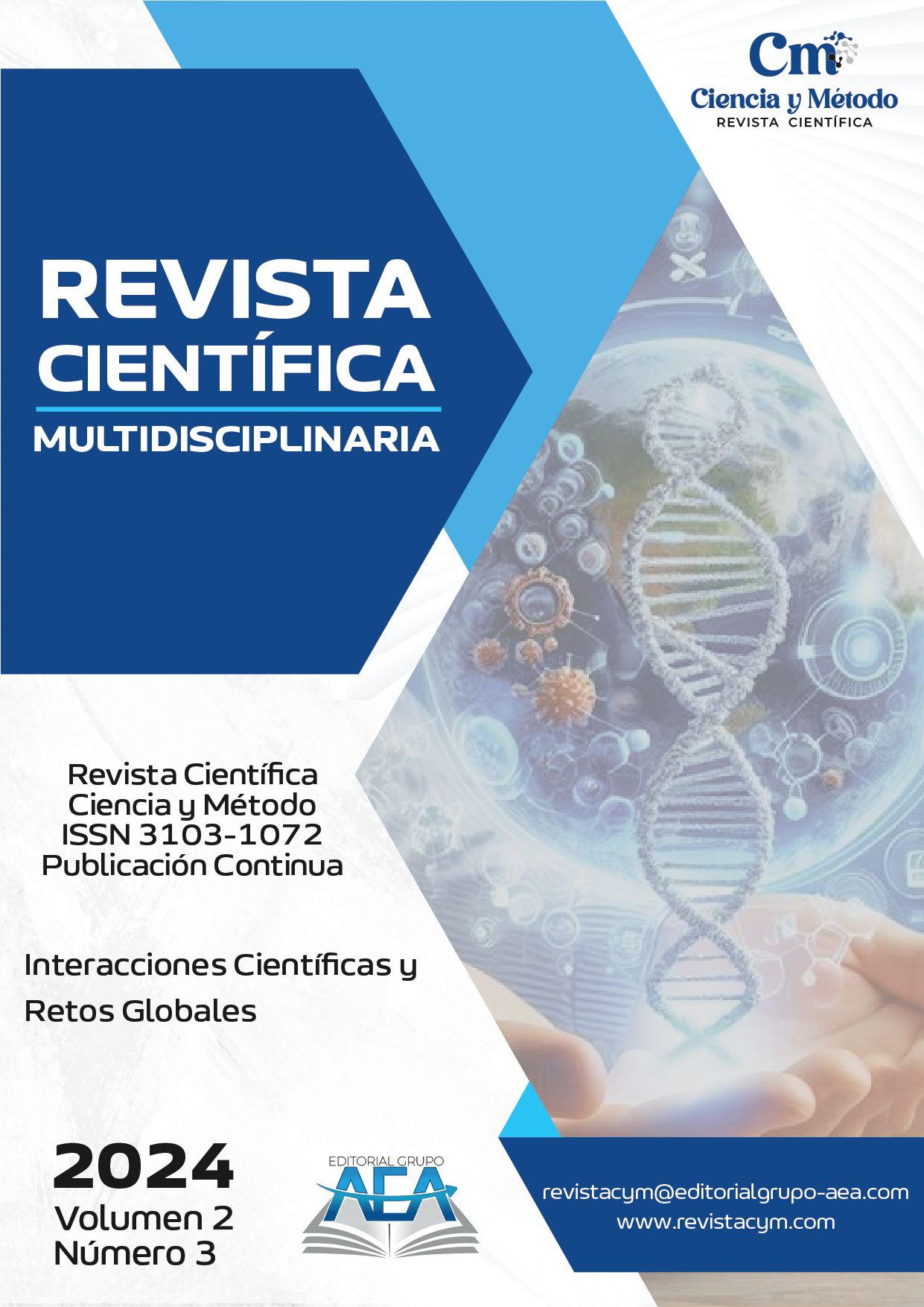Application of augmented reality in the predictive maintenance of heavy machinery
Main Article Content
Abstract
The study examines the application of augmented reality in predictive maintenance of heavy machinery, highlighting its strategic relevance in Industry 4.0 to optimize operational efficiency and reduce downtime. Using an exploratory-descriptive approach, a systematic literature review was conducted in recognized databases between 2010 and 2024, identifying benefits, limitations and emerging trends. The results show that augmented reality contributes to reduce repair times by up to 30%, reduces human errors and significantly improves technician training through interactive simulations and real-time remote assistance. Integration with IoT sensors enhances the contextual visualization of predictive data, favoring informed decisions and the anticipation of critical failures. However, barriers remain, such as high initial investment, lack of interoperable standards and cultural resistance to change. In conclusion, augmented reality is emerging as an essential resource that requires comprehensive organizational and training strategies to consolidate its sustainable adoption.
Downloads
Article Details
Section

This work is licensed under a Creative Commons Attribution-NonCommercial 4.0 International License.
How to Cite
References
Bacca, J., Baldiris, S., Fabregat, R., Graf, S., & Kinshuk. (2014). Augmented reality trends in education: A systematic review of research and applications. Educational Technology & Society, 17(4), 133–149. http://www.jstor.org/stable/jeductechsoci.17.4.133
Beltrán-Jimenez, S. S., Gómez-Reina, M. Ángel, Monsalve-Estrada, N. Y., Ospina-Ladino, M. C., & López-Muñoz, L. G. (2023). Optimización del Overrun (aireado), del rendimiento, de los sólidos solubles y los costos de un helado mediante el diseño de mezclas. Journal of Economic and Social Science Research, 3(4), 68–83. https://doi.org/10.55813/gaea/jessr/v3/n4/81 DOI: https://doi.org/10.55813/gaea/jessr/v3/n4/81
Chatzimichailidou, M. M., Syberfeldt, A., Wang, L., & Holm, M. (2022). Augmented reality for predictive maintenance in manufacturing: A review. Procedia CIRP, 107, 313–318.
Faccio, M., Persona, A., & Zanin, G. (2019). Design and integration of intelligent systems for predictive maintenance: A case study in the machinery industry. Procedia Manufacturing, 38, 1222–1229.
Fiorentino, M., Uva, A. E., Gattullo, M., Debernardis, S., & Monno, G. (2014). Augmented reality on large screen for interactive maintenance instructions. Computers in Industry, 65(2), 270–278. https://doi.org/10.1016/j.compind.2013.11.004 DOI: https://doi.org/10.1016/j.compind.2013.11.004
García-Hernández, C., Rodríguez, J., Pérez, A., & Martínez, L. (2019). Virtual, augmented and mixed reality in Industry 4.0: A systematic review. Sensors, 19(21), 480.
Lee, J., Bagheri, B., & Kao, H. A. (2015). A cyber-physical systems architecture for Industry 4.0-based manufacturing systems. Manufacturing Letters, 3, 18–23. https://doi.org/10.1016/j.mfglet.2014.12.001 DOI: https://doi.org/10.1016/j.mfglet.2014.12.001
Nee, A. Y. C., Ong, S. K., Chryssolouris, G., & Mourtzis, D. (2012). Augmented reality applications in design and manufacturing. CIRP Annals, 61(2), 657–679. https://doi.org/10.1016/j.cirp.2012.05.010 DOI: https://doi.org/10.1016/j.cirp.2012.05.010
Ong, S. K., Yuan, M. L., & Nee, A. Y. C. (2008). Augmented reality applications in manufacturing: a survey. International Journal of Production Research, 46(10), 2707–2742. https://doi.org/10.1080/00207540601064773 DOI: https://doi.org/10.1080/00207540601064773
Palmarini, R., Erkoyuncu, J. A., Roy, R., & Torabmostaedi, H. (2018). A systematic review of augmented reality applications in maintenance. Robotics and Computer-Integrated Manufacturing, 49, 215–228. https://doi.org/10.1016/j.rcim.2017.06.002 DOI: https://doi.org/10.1016/j.rcim.2017.06.002
Sanna, A., Lamberti, F., Paravati, G., & Manuri, F. (2020). A survey on the use of Augmented Reality in industrial maintenance. Computers in Industry, 118, 103220.
Syberfeldt, A., Holm, M., Wang, L., & Lindblom, J. (2017). Supporting operators in assembly systems with Augmented Reality: An overview of existing research and applications and their industrial use. Procedia CIRP, 63, 14–19.
Torres, P., Rios, J., & Martínez, M. A. (2020). Predictive maintenance techniques and their application to industrial equipment. Applied Sciences, 10(12), 4056.
Van Krevelen, D. W. F., & Poelman, R. (2010). A survey of augmented reality technologies, applications and limitations. The International Journal of Virtual Reality, 9(2), 1–20. DOI: https://doi.org/10.20870/IJVR.2010.9.2.2767
Wang, X., Ong, S. K., & Nee, A. Y. C. (2016). A comprehensive survey of augmented reality assembly research. Advances in Manufacturing, 4(1), 1–22. https://doi.org/10.1007/s40436-015-0131-4 DOI: https://doi.org/10.1007/s40436-015-0131-4
Zonta, T., da Costa, C. A., da Rosa Righi, R., de Lima, M. J., da Trindade, E. S., & Li, G. (2020). Predictive maintenance in the Industry 4.0: A systematic literature review. Computers & Industrial Engineering, 150, 106889. https://doi.org/10.1016/j.cie.2020.106889 DOI: https://doi.org/10.1016/j.cie.2020.106889





